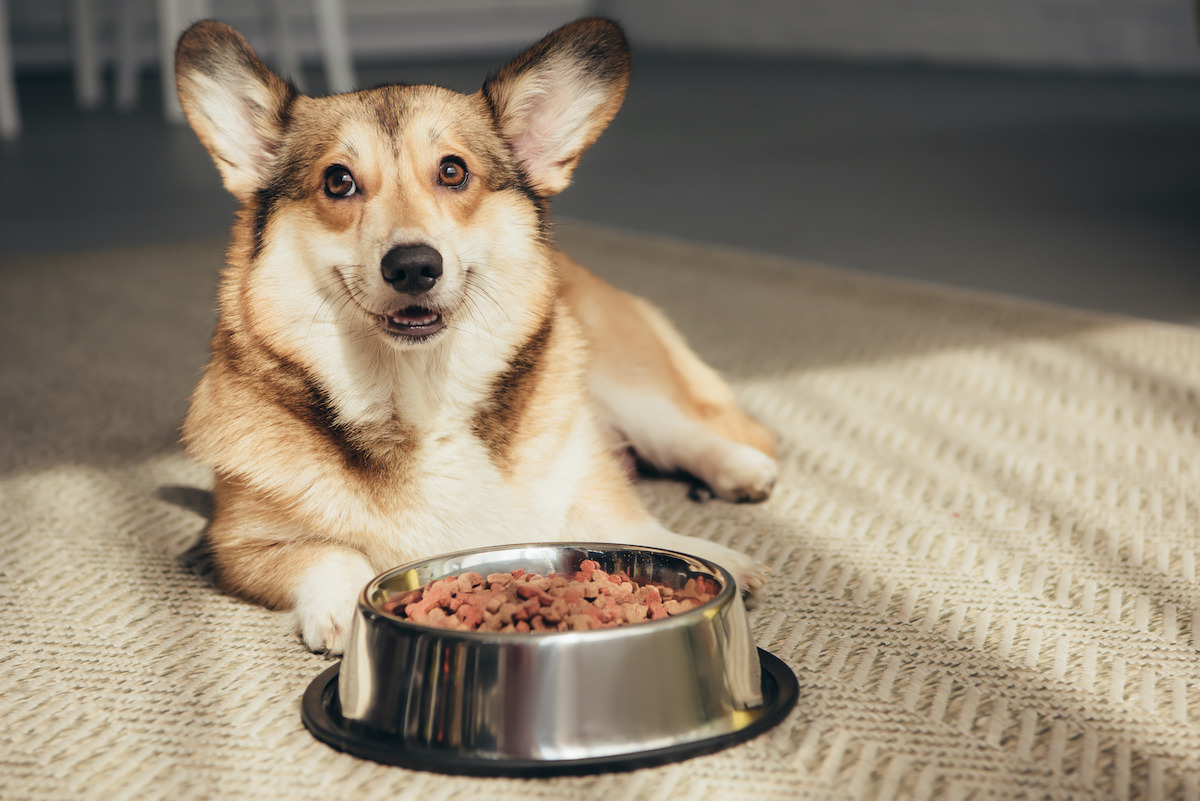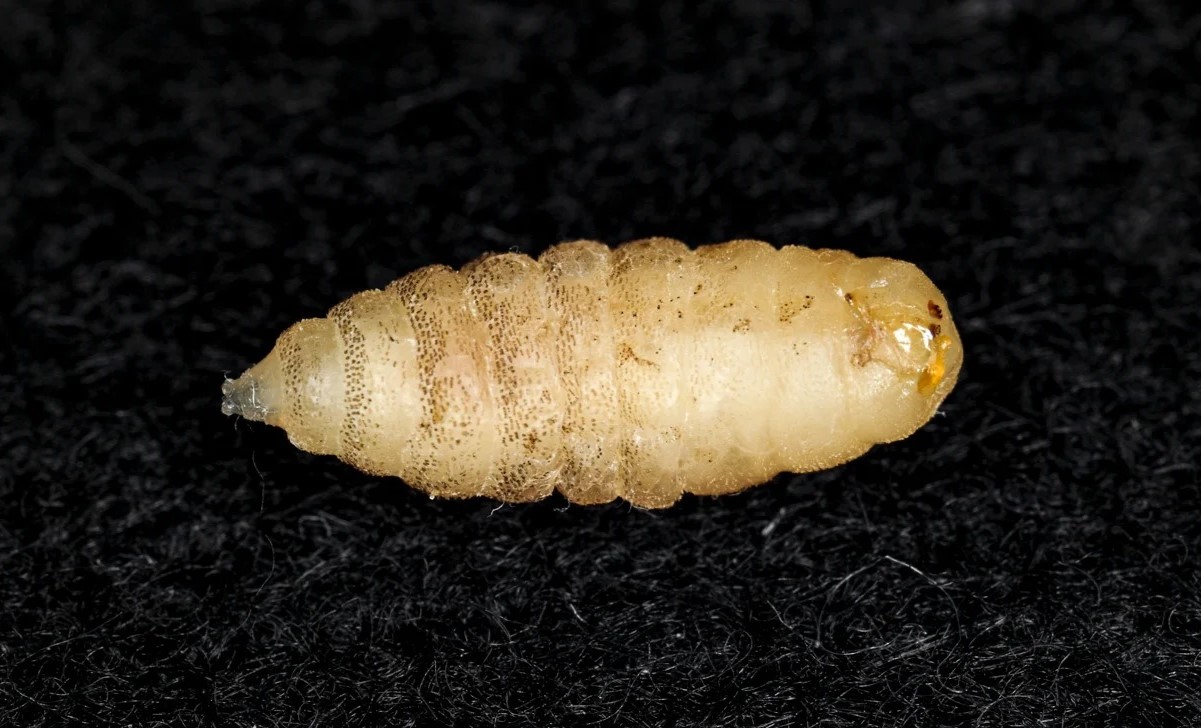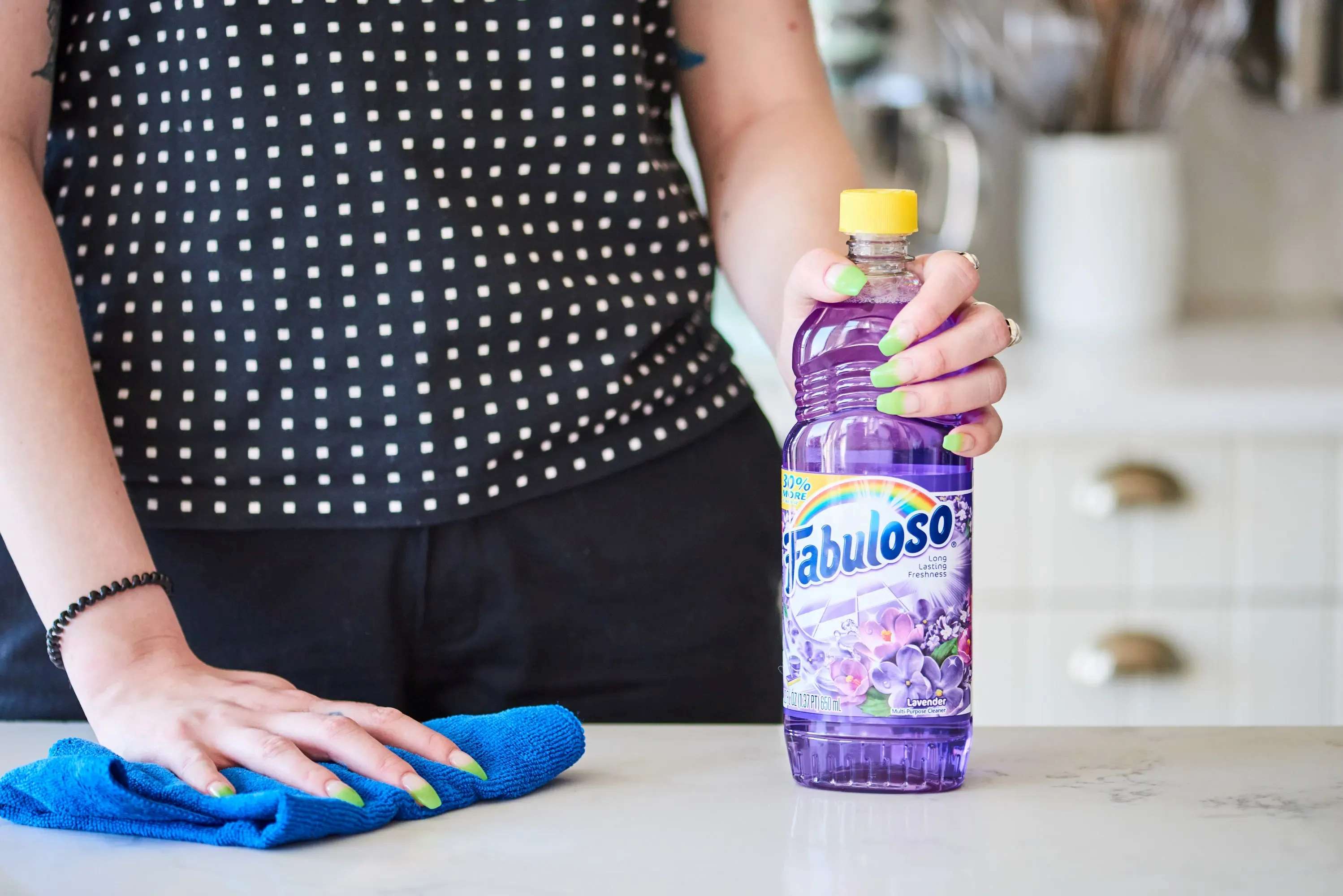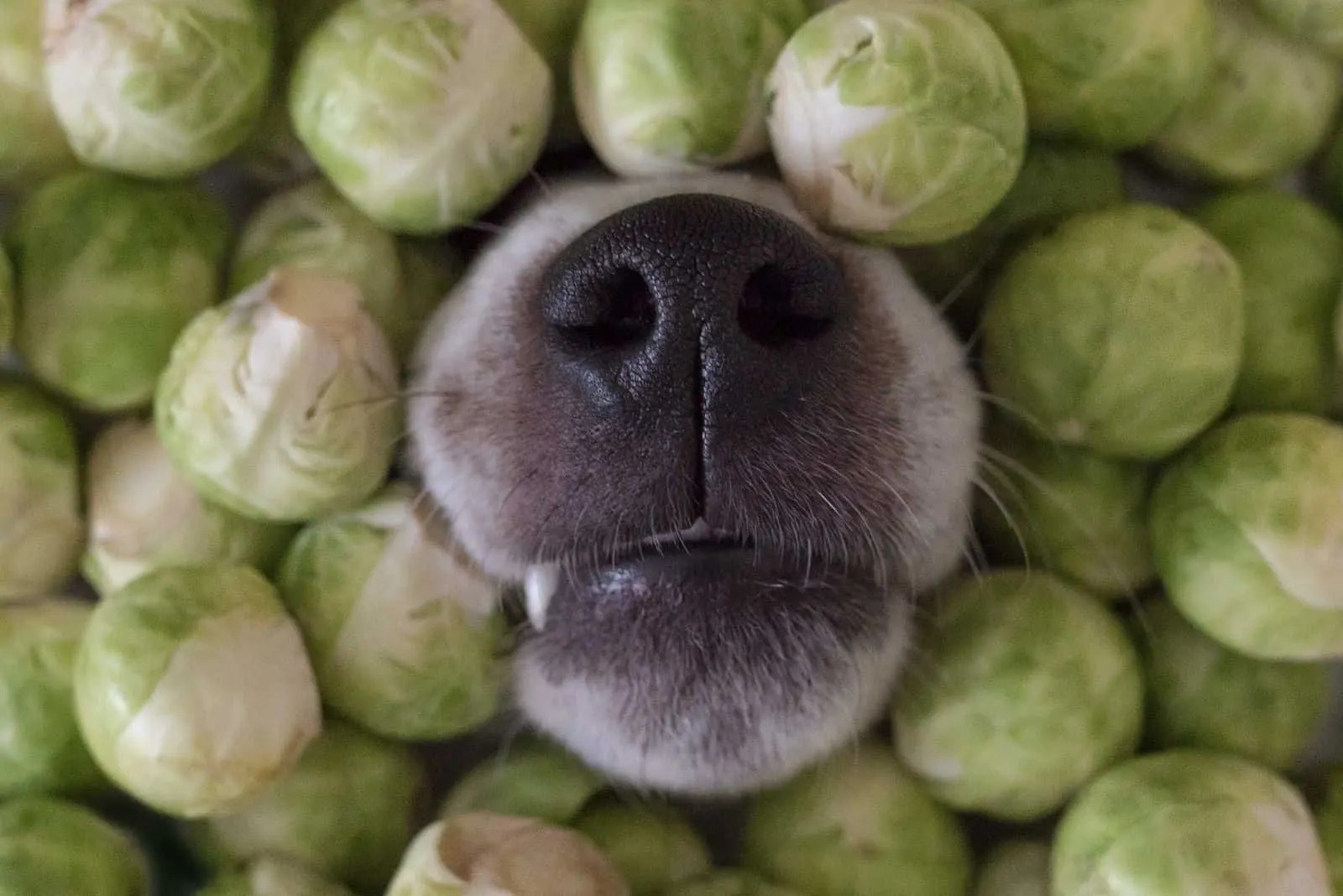Home>Health and Wellness>The Shocking Truth: Spices And Dogs – A Dangerous Combination!


Health and Wellness
The Shocking Truth: Spices And Dogs – A Dangerous Combination!
Published: January 24, 2024
Learn about the dangers of feeding spices to dogs and how it can impact their health and wellness. Keep your furry friend safe and healthy.
(Many of the links in this article redirect to a specific reviewed product. Your purchase of these products through affiliate links helps to generate commission for Noodls.com, at no extra cost. Learn more)
Table of Contents
Introduction
Spices are a staple in many kitchens, adding flavor and depth to our favorite dishes. However, when it comes to our furry friends, the use of certain spices can pose a significant threat to their well-being. While we may be tempted to share our love of flavorful foods with our canine companions, it's crucial to understand that not all spices are safe for them to consume. In fact, some common spices found in our pantries can be downright dangerous for dogs.
As responsible pet owners, it's our duty to be aware of the potential risks associated with sharing human foods, including those seasoned with various spices, with our beloved pets. While certain spices may seem harmless to us, they can have adverse effects on a dog's health when ingested. This alarming truth underscores the importance of educating ourselves about the potential dangers lurking in our spice racks and taking proactive measures to safeguard our furry friends from harm.
Throughout this article, we will delve into the specific spices that can be harmful to dogs, the symptoms of spice poisoning in dogs, appropriate treatment methods, and crucial preventive measures to ensure the well-being of our four-legged companions. By gaining a deeper understanding of the risks associated with spices and dogs, we can equip ourselves with the knowledge needed to protect our pets and promote their overall health and happiness.
Commonly Used Spices Harmful to Dogs
-
Garlic and Onion: While these aromatic additions can enhance the flavor of many dishes, they contain compounds that can cause oxidative damage to a dog's red blood cells, leading to anemia. Even small amounts of garlic and onion, whether fresh, powdered, or in seasoning blends, can be toxic to dogs.
-
Xylitol: Although not a spice, xylitol is a common sweetener found in sugar-free gum, candies, and some peanut butter brands. Ingesting xylitol can cause a rapid release of insulin in dogs, leading to a dangerous drop in blood sugar levels and potentially resulting in seizures or liver failure.
-
Salt: While a pinch of salt may seem harmless, excessive consumption of salt can lead to sodium ion poisoning in dogs. This can cause symptoms such as vomiting, diarrhea, tremors, and in severe cases, even death. Foods high in salt, including salty snacks and seasoned meats, should be kept out of reach of pets.
-
Nutmeg: Often used in baking and cooking, nutmeg contains a compound called myristicin, which can be toxic to dogs when ingested in large amounts. Symptoms of nutmeg poisoning in dogs may include increased heart rate, disorientation, abdominal pain, and seizures.
-
Chili Peppers: The spicy heat of chili peppers comes from a substance called capsaicin, which can cause stomach upset and irritation in dogs. Ingesting chili peppers can lead to symptoms such as drooling, vomiting, diarrhea, and stomach pain.
-
Cinnamon: While a sprinkle of cinnamon can add warmth to many dishes, it contains compounds that can be harmful to dogs. Ingesting large amounts of cinnamon can lead to upset stomach, vomiting, diarrhea, and potential liver damage.
-
Other Common Culprits: Additional spices such as cayenne pepper, paprika, and mustard seeds can also pose risks to dogs when consumed in significant quantities. It's essential to be mindful of the ingredients in the foods we share with our pets and to avoid seasoning their meals with potentially harmful spices.
By being mindful of the spices we use and ensuring that our furry friends are not exposed to these harmful substances, we can help protect them from potential health risks associated with spice ingestion.
Symptoms of Spice Poisoning in Dogs
When a dog ingests spices that are harmful to their system, it can lead to a range of distressing symptoms. It's crucial for pet owners to be vigilant and recognize the signs of spice poisoning in dogs, as prompt intervention can be instrumental in mitigating the adverse effects on their health.
-
Gastrointestinal Distress: Dogs may exhibit symptoms of gastrointestinal upset, including vomiting and diarrhea, after consuming toxic spices. The presence of these symptoms can indicate that the dog's digestive system is reacting negatively to the ingested spice.
-
Excessive Drooling: Experiencing an unusual increase in drooling can be a sign of spice poisoning in dogs. This excessive drooling may be accompanied by other oral symptoms such as pawing at the mouth or displaying signs of discomfort when eating or drinking.
-
Abdominal Discomfort: Dogs suffering from spice poisoning may display signs of abdominal pain or discomfort. This can manifest as restlessness, pacing, or a hunched posture, indicating that the dog is experiencing physical distress.
-
Lethargy and Weakness: Spice poisoning can lead to a decrease in energy levels and overall weakness in affected dogs. They may appear unusually lethargic, exhibiting a lack of interest in activities they typically enjoy and showing signs of fatigue.
-
Respiratory Distress: In severe cases of spice poisoning, dogs may experience respiratory difficulties such as rapid or labored breathing. This can be a concerning symptom and should prompt immediate veterinary attention.
-
Neurological Symptoms: Some toxic spices can affect a dog's neurological functions, leading to symptoms such as disorientation, tremors, or seizures. These neurological manifestations are indicative of a serious reaction to the ingested spice and require urgent medical intervention.
-
Elevated Heart Rate: Dogs suffering from spice poisoning may exhibit an increased heart rate, which can be detected by monitoring their pulse. An elevated heart rate may be a sign of distress and should be taken seriously.
It's important to note that the severity and combination of symptoms can vary depending on the type and quantity of spice ingested. If a pet owner suspects that their dog has consumed a harmful spice and begins to exhibit any of these symptoms, seeking immediate veterinary care is paramount. Early detection and intervention can significantly improve the prognosis and prevent further complications.
By familiarizing themselves with these potential symptoms of spice poisoning in dogs, pet owners can act swiftly to protect their furry companions from the detrimental effects of ingesting toxic spices. Vigilance, quick action, and access to professional veterinary care are essential components of safeguarding the well-being of dogs in the event of spice poisoning.
Treatment for Spice Poisoning in Dogs
Upon suspecting or confirming spice poisoning in a dog, swift and appropriate treatment is essential to mitigate the adverse effects and promote the animal's recovery. Pet owners should prioritize seeking professional veterinary care to ensure that their furry companion receives the necessary medical attention. The treatment approach for spice poisoning in dogs typically involves the following key components:
1. Immediate Veterinary Evaluation:
Upon observing symptoms of spice poisoning in their dog, pet owners should promptly transport the animal to a veterinary clinic or emergency facility. The veterinarian will conduct a thorough assessment to evaluate the severity of the poisoning and determine the appropriate course of treatment. This initial evaluation is crucial in identifying the specific spice ingested and assessing the dog's overall condition.
2. Decontamination:
In cases of recent spice ingestion, the veterinarian may initiate decontamination procedures to limit further absorption of the toxic substance. This can involve inducing vomiting or administering activated charcoal to help bind the ingested spice and prevent its absorption in the gastrointestinal tract. Decontamination aims to reduce the impact of the toxic substance on the dog's body.
3. Supportive Care:
Depending on the symptoms and severity of the spice poisoning, the veterinarian may administer supportive care to address the dog's specific needs. This can include intravenous fluids to maintain hydration, medications to alleviate gastrointestinal distress, and interventions to stabilize vital signs and address any systemic complications resulting from the poisoning.
4. Monitoring and Observation:
Throughout the treatment process, the dog will be closely monitored to track its response to the interventions and ensure that its condition is improving. Vital signs, neurological status, and overall well-being will be regularly assessed to gauge the effectiveness of the treatment and identify any emerging concerns that require immediate attention.
5. Follow-Up Care and Guidance:
After the initial treatment phase, the veterinarian may provide guidance to the pet owner regarding post-care measures and potential complications to watch for at home. This can include dietary recommendations, medication administration if prescribed, and instructions for monitoring the dog's recovery progress. Follow-up appointments may be scheduled to assess the dog's ongoing recovery and make any necessary adjustments to the treatment plan.
In summary, the treatment for spice poisoning in dogs necessitates prompt veterinary intervention, decontamination measures, supportive care tailored to the dog's specific symptoms, diligent monitoring, and comprehensive guidance for post-treatment care. By promptly addressing spice poisoning through professional veterinary care, pet owners can optimize the chances of a favorable outcome and facilitate their dog's full recovery from the adverse effects of spice ingestion.
Preventing Spice Poisoning in Dogs
Preventing spice poisoning in dogs is a fundamental aspect of responsible pet ownership, requiring proactive measures to safeguard our furry companions from potential harm. By implementing the following preventive strategies, pet owners can create a safe environment for their dogs and minimize the risk of spice ingestion:
-
Secure Spice Storage: Store all spices, seasonings, and cooking ingredients in secure cabinets or high shelves that are inaccessible to pets. This reduces the likelihood of dogs gaining access to potentially harmful spices and prevents accidental ingestion.
-
Educate Household Members: Ensure that all members of the household, including children and visitors, are aware of the dangers associated with sharing human foods seasoned with harmful spices with dogs. Encourage open communication and emphasize the importance of not offering seasoned foods to pets.
-
Careful Food Preparation: Exercise caution when preparing meals to avoid spillage or dropping of spices, especially in areas where dogs have access. Wiping down countertops and cleaning up any spilled spices promptly can help prevent accidental ingestion by curious pets.
-
Pet-Friendly Meal Planning: When preparing meals for the family, be mindful of the ingredients used and set aside portions of pet-safe food for the dog. Avoid seasoning their meals with harmful spices, and consider incorporating dog-friendly ingredients to provide them with a nutritious and safe dining experience.
-
Supervision During Meal Times: While enjoying meals, be attentive to the dog's proximity and ensure that they are not exposed to seasoned foods. Supervision during meal times can prevent dogs from accessing potentially hazardous spices or seasoned dishes left unattended.
-
Label Awareness: Be diligent in reading product labels and familiarize yourself with common foods and products that may contain harmful spices or seasoning blends. This awareness can guide informed purchasing decisions and help avoid inadvertently introducing toxic substances into the household.
-
Consultation with Veterinarian: Inquire with a veterinarian about safe and appropriate dietary options for dogs, including guidance on pet-friendly spices and herbs that can be incorporated into their meals. Seeking professional advice can enhance the understanding of suitable dietary practices for canine companions.
By integrating these preventive measures into daily routines and household practices, pet owners can create a protective environment that minimizes the risk of spice poisoning in dogs. Proactive awareness, responsible food handling, and a commitment to pet safety are integral in promoting the well-being of our beloved canine companions.
The safety and health of dogs are paramount, and by taking proactive steps to prevent spice poisoning, pet owners can cultivate a nurturing and secure environment that supports the overall wellness of their furry family members.
Conclusion
In conclusion, the potential dangers associated with the ingestion of harmful spices by dogs underscore the critical need for pet owners to prioritize their furry companions' safety and well-being. The alarming reality that seemingly innocuous spices commonly found in our kitchens can pose significant risks to dogs serves as a poignant reminder of the importance of informed and responsible pet care practices.
As we navigate our culinary endeavors and strive to create flavorful meals for our families, it is imperative to exercise caution and mindfulness when it comes to sharing food with our canine companions. The spices that add depth and zest to our dishes may harbor toxic compounds that can adversely affect a dog's health, making it essential for pet owners to be vigilant and proactive in protecting their pets from potential harm.
By recognizing the specific spices that can pose risks to dogs, such as garlic, onion, xylitol, salt, nutmeg, chili peppers, and cinnamon, pet owners can make informed decisions about the foods they offer to their four-legged friends. Additionally, being attuned to the symptoms of spice poisoning and understanding the necessary treatment and preventive measures empowers pet owners to take swift and effective action to safeguard their dogs' well-being.
Furthermore, the implementation of preventive strategies, such as secure spice storage, careful food preparation, and pet-friendly meal planning, can significantly reduce the likelihood of spice ingestion by dogs, creating a safer and more nurturing environment for our beloved pets.
In the pursuit of promoting the health and happiness of our canine companions, it is incumbent upon pet owners to prioritize their pets' safety by fostering a culture of responsible food handling, informed decision-making, and proactive preventive measures. Through these concerted efforts, we can create a harmonious and secure living space where our dogs can thrive without being exposed to the potential hazards of harmful spices.
Ultimately, by embracing a holistic approach to pet care that encompasses nutritional awareness, hazard prevention, and swift intervention when necessary, pet owners can champion the well-being of their dogs and cultivate a fulfilling and enriching bond with their loyal companions. It is through these dedicated actions and unwavering commitment to pet safety that we can ensure that our furry friends lead vibrant, healthy, and joy-filled lives by our side.













